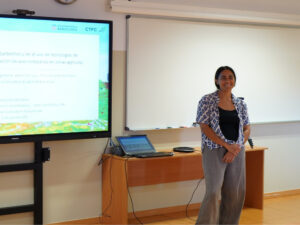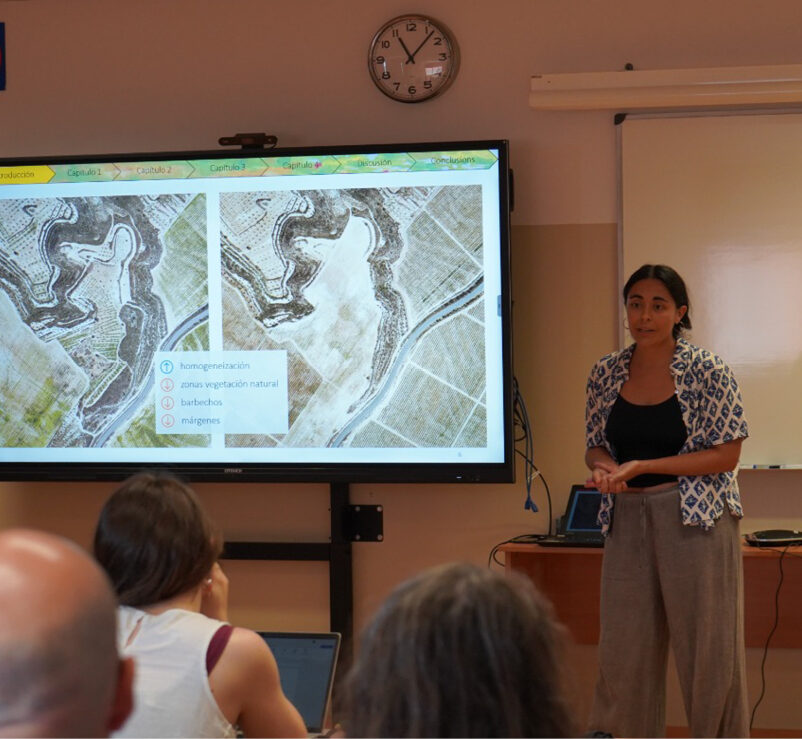The research provides new scientific evidence to improve the effectiveness of fallows as a conservation tool and tracking technologies in protecting threatened species in Mediterranean agricultural landscapes.
On July 15, Natalia Revilla- Martín defended her doctoral thesis entitled “Advances in fallow land management and the use of tracking technologies for the conservation of steppe birds in agricultural areas” at the Faculty of Biology of the University of Barcelona. Her work explores the role that agricultural practices and new technologies can play in improving the conservation status of declining species such as the stone-curlew or thelittle bustard.
Fallow lands —temporarily uncultivated agricultural fields— have become a key tool for the conservation of steppe birds in areas such as the Plana de Lleida, where the study was conducted. Revilla, from the Conservation Biology Group at the CTFC, analyzed how field size, elevation, and landscape context influence the presence of these species. She found that larger fallows at higher elevations were more favorable, although other agronomic and landscape factors also played a significant role.
The research also assessed how mechanical management of fallows affects arthropod communities, a key food source for many birds. Results indicate that low-intensity management —such as avoiding interventions during the breeding season, prioritizing shredding vegetation over tilling, or maintaining untreated strips— can significantly improve food availability while creating adequate roosting and nesting sites for steppe birds.
 Another key part of the thesis was the use of GPS and accelerometry to study the behavior and habitat use of the stone-curlew and little bustard. “These systems allowed us to identify diurnal and nocturnal patterns, detect seasonal and sex-related differences in activity, and classify behaviors such as feeding or courtship, offering a new dimension to the ecological understanding of these species,” explains the researcher.
Another key part of the thesis was the use of GPS and accelerometry to study the behavior and habitat use of the stone-curlew and little bustard. “These systems allowed us to identify diurnal and nocturnal patterns, detect seasonal and sex-related differences in activity, and classify behaviors such as feeding or courtship, offering a new dimension to the ecological understanding of these species,” explains the researcher.
With this work, Revilla- Martín highlights the importance of applying scientific and contextual criteria in the design of agri-environmental measures —particularly within the framework of the new European CAP— to ensure their long-term effectiveness and viability. The thesis underscores that not all fallows have the same conservation value and that tailored management can make a significant difference in preserving agricultural biodiversity.
Last modified: 15 July 2025










